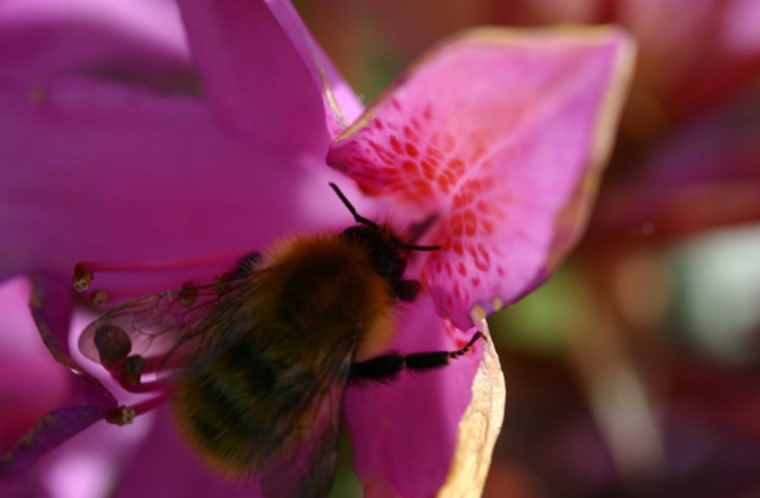Fragrant spring flowers and floral perfumes are possible thanks to the discriminating scent sense of honeybees, suggests a new study that found the buzzing pollinators could be driving flowers to produce their intoxicating aromas.
Scientists were able to train the honeybees to associate two similar odors with different nectar rewards. The results left little doubt over what honeybees like to sip: soda-sweet nectar.
"Bees tend to like sugary solutions that are about equivalent to the concentration of sugar in Coca Cola (around 30 percent sucrose)," lead author Geraldine Wright told Discovery News.
"If the nectar is too sugary, it is too viscous and difficult to drink," added Wright, a lecturer at Newcastle University's School of Biology. "They don't like salty solutions."
With this information in mind, Wright and colleagues Amir Choudhary and Michael Bentley exposed collected worker honeybees to a few different odors based on natural floral compounds. Each odor led to a particular food reward, with one having more sugar and the other containing more salt.
The findings are published in the current Proceedings of the Royal Society B.
The bees quickly learned to distinguish between the two odors, based on their associated rewards. The strength of the bees' bias depended on how delicious, or awful tasting, the food solutions were to them.
"In fact," Wright said, "our research indicates that in addition to becoming biased towards scents associated with good quality rewards, bees can equally become biased away from scents associated with bad outcomes. This would mean that a scent signal could be used by bees to avoid visiting flowers."
For plants that hope to attract honeybees, there may even be a "keeping up with the Joneses" effect, where plants are under pressure to maintain nectar rewards of similar quality to their neighbors, while simultaneously releasing enticing fragrances to draw in desired pollinators.
The big difference between plants and humans linking odors to foods, however, is that the volatile compounds produced by floral tissues aren't necessarily coming from the nectar itself. In contrast, if a person salivates smelling a savory pizza or chocolate dessert, the individual perceives odors given off by the food.
"The dissociation of signal and outcome means that a (flower) odor could potentially become a dishonestly used signal or floral reward," Wright said.
But honeybees are too smart to fall for this cheap perfume with a lousy reward scenario, the study indicates. Since the bees quickly and continuously learn which scents yield the best nectar, "this prevents plants from using floral scent dishonestly."
Good looks without substance don't fool honeybees either.
"Floral scent is a cue heavily relied upon by bees to discriminate among some flowers," Wright explained. "When the floral scent isn't correct, even if the visual aspects of the flower are exactly the same, a bee will not visit it."
She added that humans, like bees, also probably learn to associate particular smells with certain outcomes, such as when a woman detects a man's sweat.
Charles Wysocki, a behavioral neuroscientist at Monell Chemical Senses Center, recently tried, and mostly failed, to prevent women from detecting male sweat by masking the masculine odor with various other fragrances.
Like honeybees, the women, who use sweat odor as a tool for evaluating potential mates, weren't easily fooled.
"It is quite difficult to block a woman's awareness of body odor," Wysocki concluded.
